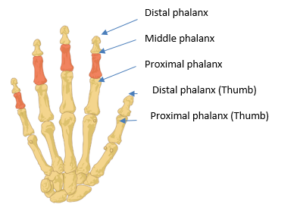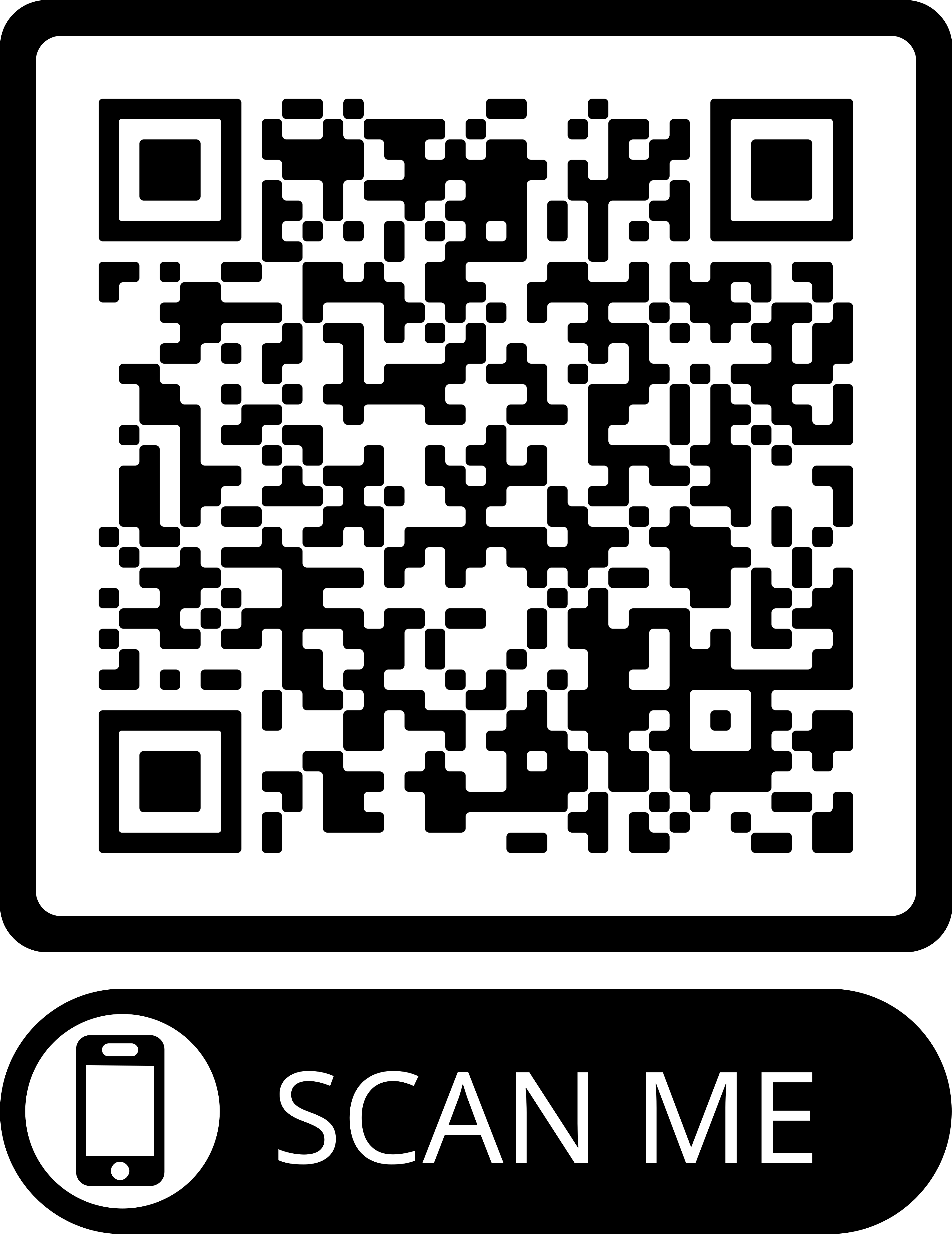- Reference Number: HEY-1285/2022
- Departments: Orthopaedics, Physiotherapy
- Last Updated: 1 September 2022
Introduction
This leaflet has been produced to give you general information. Most of your questions should be answered by this leaflet. It is not intended to replace the discussion between you and the healthcare team, but may act as a starting point for discussion. If after reading it you have any concerns or require further explanation, please discuss this with a member of the healthcare team.
What is a Phalangeal Fracture?
A phalangeal fracture is a break of a phalanx (one bone) or phalanges (more than one bone) in your finger or thumb.
Each finger has 3 phalanges. Proximal (nearest your palm), middle and distal (at your finger tip). The thumb has only 2, a proximal and distal phalanx.
Your fracture can be described as simple, stable or un-displaced. This means there is likely to be a clean break, but the pieces of bone are in the correct position, and are unlikely to move out of place.

How should it be treated?
The broken bone will heal in about 3 weeks. During this time it is necessary to protect it from excessive stress.
The finger or thumb is likely to be placed in a splint. Occasionally the finger may be taped to the one next to it this is called buddy or neighbour strapping.
What should I do in the first few days?
It is normal for the hand to be painful and swollen following this injury, sometimes even spreading to parts of the hand that were not injured. However, although a normal reaction, swelling which stays in the fingers and thumb too long, becomes very dense and sticky (fibrous) and can result in long term stiffness. To prevent this we advise that you:
- Allow your hand to rest slightly for the first 48 hours
- Take over the counter pain relief such as paracetamol
- Keep your hand elevated above your heart
- Move all of the uninjured fingers fully and often
- Use your hand as normally as possible, as your comfort allows, for everyday daily tasks such as dressing and eating meals.
You will have been told how long to wear the splint or strapping for, after which time you can remove it yourself. No further X-ray will be needed.
Exercises
Soft tissues such as tendons and ligaments, need to keep moving as the fracture heals otherwise they will become stuck leading to long term stiffness and discomfort. It is therefore important to begin exercising the injured finger or thumb regularly, once the splint is removed. Buddy strapping can remain in place during the exercises.
The following exercises should each be repeated 10 times and completed every 2-3 hours. Support your elbow on the table with your wrist straight.
- Finger/thumb extension 2. Hook
Straighten and stretch your fingers/thumb as Bend your fingers/thumb at the small joints.
straight/wide as you can. Hold 10-20 seconds Hold 10-20 seconds


3. Full Fist 4. Opposition
Bend your fingers and knuckles to make Take the tip of your thumb across to the tip
a fist as tightly as you can. of your little finger. Then down the little finger.
Hold for 10-20 seconds Hold the stretch for 10-20 seconds.


5. IP joint flexion
Position your thumb away from your palm and bend and straighten only the joint at the thumb tip.


When can I drive again?
You may not be insured to drive whilst the strapping or splint is in place. It is advisable to check with your insurance company.
It may be safe to return to driving when
- You are no longer required to wear the splint or strapping
- You can comfortably operate all the hand operated controls such as steering wheel, handbrake, and gear stick.
- You can perform an emergency stop.
What about work and sport?
If you have a job with light or clerical duties, you can work as soon as you feel comfortable.
Heavy manual work is best avoided until 6 weeks after your injury.
Full contact sport should also be avoided for at least 6 weeks
When should I call for a Patient Initiated Follow Up (PIFU) appointment?
It may take several months for discomfort to settle, and the finger or thumb may appear ‘thicker’ than on your other hand. This is normal.
You should initiate a PIFU appointment if:
- You have any problems with the splint (if you have one)
- If pain and swelling isn’t starting to settle within a week, or is getting significantly worse
- If you notice the position of the finger or thumb appears to have changed, such as being at an angle or rotated.
Or if after 3 weeks of exercise you are unable to:
- Fully straighten your finger or thumb.
- Make a fist, or get your fingertip to your palm.
- Touch the tip of each finger, and reach the base of your little finger with your thumb.
- You are struggling with light daily tasks
Or after 6 weeks, you are struggling to return to your usual work or hobbies.
Details of how to book a PIFU appointment can be found in the PIFU leaflet which you will have received alongside this leaflet. If we do not hear from you 3 months following your surgery date we will assume that you no longer require any further intervention and will be discharged from the PIFU pathway. If you have further problems with your finger after this date please contact your GP practice
Should you require further advice on the issues contained in this leaflet, please do not hesitate to contact the Physiotherapy Department on telephone: 01482 674880.
This leaflet was produced by the Physiotherapy Department, Hull University Teaching Hospitals NHS Trust and will be reviewed in September 2025
General Advice and Consent
Most of your questions should have been answered by this leaflet, but remember that this is only a starting point for discussion with the healthcare team.
Consent to treatment
Before any doctor, nurse or therapist examines or treats you, they must seek your consent or permission. In order to make a decision, you need to have information from health professionals about the treatment or investigation which is being offered to you. You should always ask them more questions if you do not understand or if you want more information.
The information you receive should be about your condition, the alternatives available to you, and whether it carries risks as well as the benefits. What is important is that your consent is genuine or valid. That means:
- you must be able to give your consent
- you must be given enough information to enable you to make a decision
- you must be acting under your own free will and not under the strong influence of another person
Information about you
We collect and use your information to provide you with care and treatment. As part of your care, information about you will be shared between members of a healthcare team, some of whom you may not meet. Your information may also be used to help train staff, to check the quality of our care, to manage and plan the health service, and to help with research. Wherever possible we use anonymous data.
We may pass on relevant information to other health organisations that provide you with care. All information is treated as strictly confidential and is not given to anyone who does not need it. If you have any concerns please ask your doctor, or the person caring for you.
Under the General Data Protection Regulation and the Data Protection Act 2018 we are responsible for maintaining the confidentiality of any information we hold about you. For further information visit the following page: Confidential Information about You.
If you or your carer needs information about your health and wellbeing and about your care and treatment in a different format, such as large print, braille or audio, due to disability, impairment or sensory loss, please advise a member of staff and this can be arranged.

